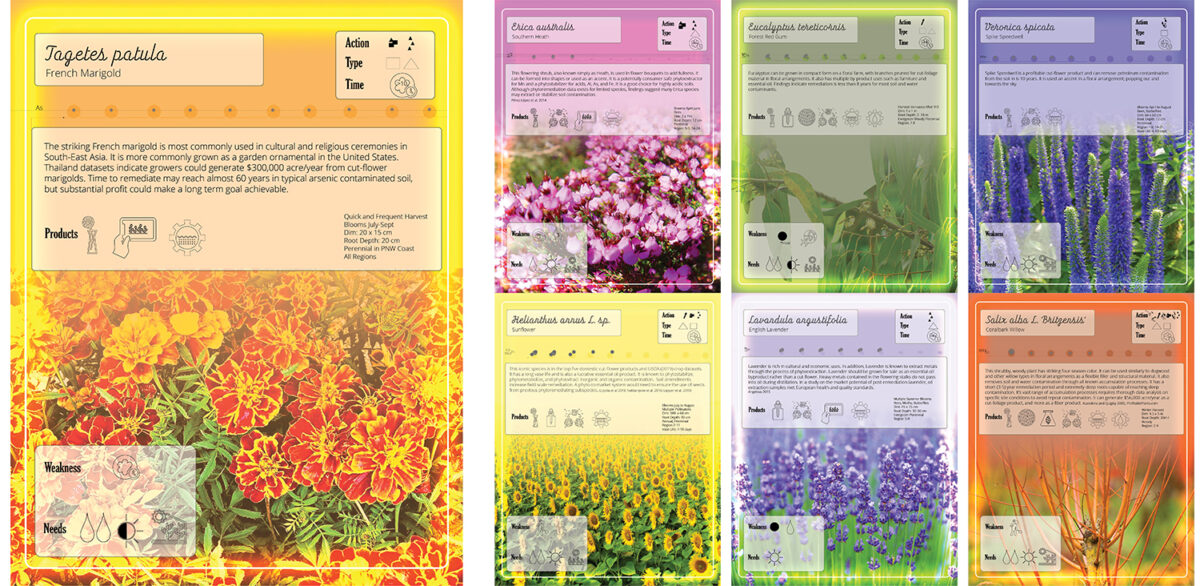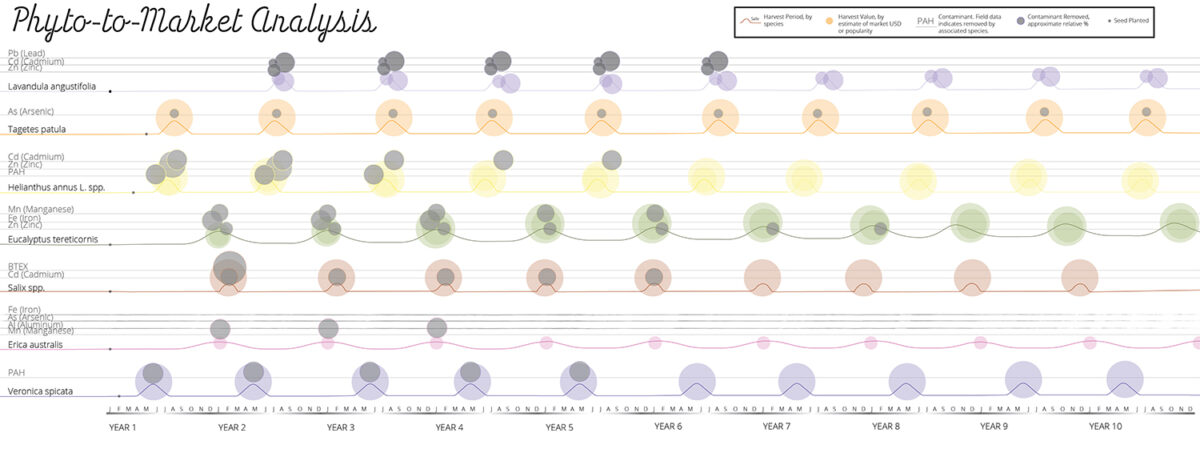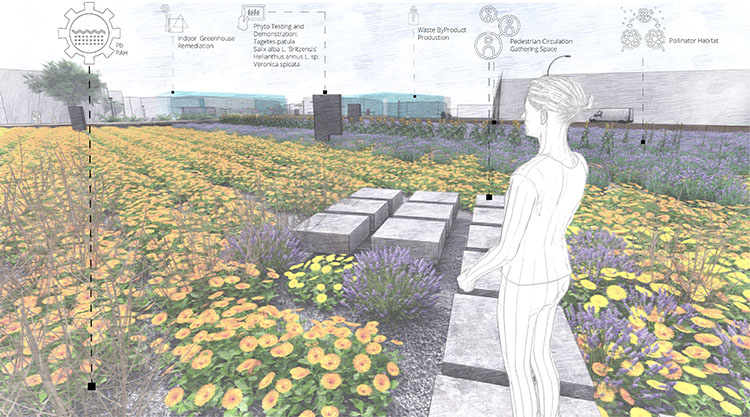The floral industry is at once global and personal. Although ephemeral and impractical, humans have smiled at a simple gift of a cut-flower for thousands of years and spent countless hours cultivating and cherishing the color and form of this essential plant part. Regional floriculture in the western United States is robust, with floral farms all along the west coast, yet the US still imports over 75% of cut-flowers from South America. This contributes to global carbon emissions and landscape contamination. Local-based solutions can reduce environmental impact, provide an experience of place, and connect consumers to local flora. Many flowering plants possess the ability to filter pollutants out of contaminated soil (phytoremediation), and there are a possible few that could continue their lives as cut-flowers or waste by-products. Urban farmers faced with contaminated urban soil may find a solution in this industrial, ecological proposal.


This landscape architecture design research thesis proposes suitable floral species for a “phyto-to-market system” and an urban floral farm and phytoremediation demonstration garden. This design is situated within an existing industrial “Flower District” network in Seattle’s Georgetown neighborhood. If implemented, it could be a testing bed for phytoremediation, provide a new relationship to bouquets, provide safer routes for pedestrians between the park and bus routes, and provide an opportunity for urban farmers to remediate their soil while making a profit at the local farmers market. I invite you to learn more about my project in this PDF presentation or in the linked two-minute video walk through.
Read more about Elizabeth’s work at ourfutureenvironment.org.



